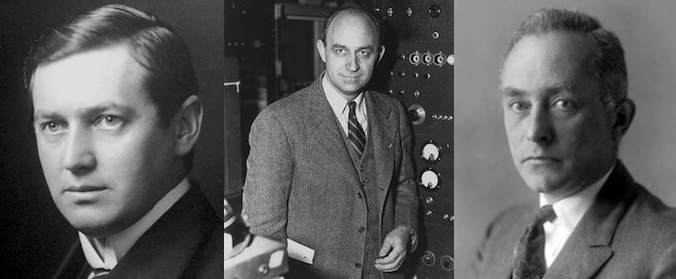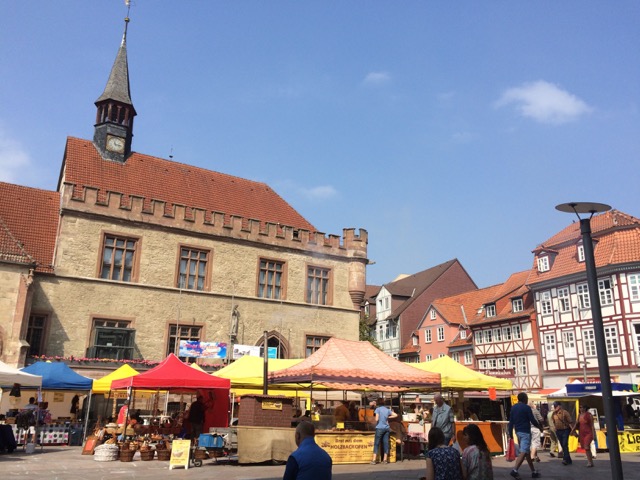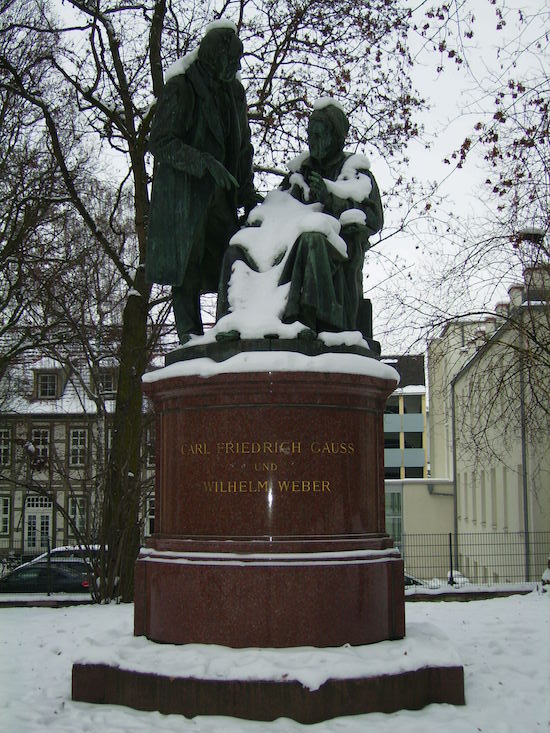
Göttingen, Germany, a city located in the valley of the Leine River, is home to one of our COMSOL branch offices. Recognized as a university town, the city features a vibrant and youthful atmosphere, with an emphasis on freedom in scientific research and exploration. Let’s take a closer look at the history of Göttingen’s prestigious university — the University of Göttingen — and learn more about the character and feel of the city.
A Common Ground in the Path to Success
Since 1901, the Royal Swedish Academy of Sciences has honored the contributions of physicists around the world with the Nobel Prize in Physics. Karl Manne Georg Siegbahn received the award in 1924 for his research and discoveries within the field of X-ray spectroscopy. Fast forward a few years to 1938, when Enrico Fermi earned the prize for his work involving induced radioactivity. In 1954, the honor was bestowed upon Max Born for his research in quantum mechanics, notably his statistical interpretation of the wave function.

Siegbahn, Fermi, and Born were each awarded the Nobel Prize in Physics for their scientific research and contributions.
Receiving the Nobel Prize is not the only connection these influential figures share. Each of them had ties to the University of Göttingen in Göttingen, Germany. In fact, 47 Nobel laureates in total — with focus areas ranging from literature and chemistry to physiology and medicine — studied, taught, or conducted research at this prestigious and internationally renowned university. The majority of these prizes were awarded in the first half of the 20th century, also referred to as the “Göttingen Nobel Prize wonder”, with honors continuing to flourish in later years.
Let’s trace the roots of this university, while hearing from some of our German colleagues who studied there.
Both Renowned and Respected: The University of Göttingen
Between the 1620s and the 1780s, the European Enlightenment brought about a cultural shift from traditional authorities to reason, analysis, and individualism. People were now encouraged to think freely, ask questions, and use their knowledge. These ideas prompted the establishment of a university that fostered academic freedom and enlightenment. What resulted was the founding of the University of Göttingen in 1734.
In the university’s early years, the spotlight was initially on its faculty of law. Studying public law at the university became widely popular, with the program making up more than half of its total number of students. Among these law students: the famous German poet Heinrich Heine and the German unifier and first chancellor Otto von Bismarck, the latter of whom was more renowned for his partying than for his studying…
In the 19th century, the university began to see more contributions from mathematicians such as Bernhard Riemann and Peter Gustav Lejeune Dirichlet. By the start of the 20th century, Göttingen had become a hub for mathematics, attracting mathematicians from various parts of the world.
The university continued to flourish in other areas, becoming a leader in fluid dynamics and aerodynamics. Ludwig Prandtl, who joined the university in 1904, was influential in this growth, introducing the idea of the boundary layer as well as determining mathematical aerodynamics. Göttingen also evolved into one of the primary development centers for modern physics. Max Born, the Nobel Prize winner I referenced earlier, led the physics theory group at the university from 1921 to 1933.
“Studying physics in Göttingen was like standing on the shoulders of giants,” said Phillip Oberdorfer, one of my colleagues from our Göttingen office. “In some of the university buildings, one can still breathe the air of scientific history.”
Today, the University of Göttingen continues to receive international renown. It is recognized as the oldest university in the state of Lower Saxony with the largest student enrollment. With the campus spread throughout various locations in the city, Göttingen itself is known as a university town with a youthful feel.
“There are around 22,000 students in Göttingen, a city of around 120,000 people,” said Hinrich Arnoldt, another one of my German colleagues. “Thus, they pass their young and liberal spirit into the city, creating a rich and diverse cultural scene.”
The Character and Feel of Göttingen
In correlation with its younger population, Göttingen is home to many shops, cafés, and bars as well as choirs, orchestras, and theaters. Other events such as the Göttingen International Handel Festival, a celebration of baroque music, also take place in the city center, adding to its cultural flavor.
“This cultural activity creates a good balance to the everyday work,” Hinrich told me. “As both work and cultural activity can be had around the city center, they are easily combined, providing for an easygoing style of life.”

Photo from the city.
Throughout the city, you will find a number of memorial tributes celebrating Göttingen’s cultural heritage. These tributes are located throughout Göttingen’s historic center and outside of the homes where famous people once lived.
Near the COMSOL office, there is a memorial plate for Peter Gustav Lejeune Dirichlet, who is best known for his contributions to number theory and whose name you may recognize as a boundary condition within the COMSOL Multiphysics simulation software.
A statue of Carl Friedrich Gauss and Wilhelm Eduard Weber can be found near the city center, commemorating their contributions to mathematics and electromagnetism. Another monument of Gauss within the city marks where he sent the first electromagnetic signal to the space observatory on the other side of town.

Göttingen features many monuments commemorating historic figures, such as this statue honoring Gauss and Weber.
During last year’s holiday party, a group from our COMSOL office in Göttingen visited the earthquake observatory just outside of the city. Here, they observed a reenactment of an experiment in which a huge metal ball was lifted and dropped from eight meters high. This experiment was designed to simulate the effects of an earthquake, testing the specific measurement equipment. Our colleagues, like the city of Göttingen, continue to honor the scientific discoveries of the past, while paving the way toward future innovation.



Comments (0)